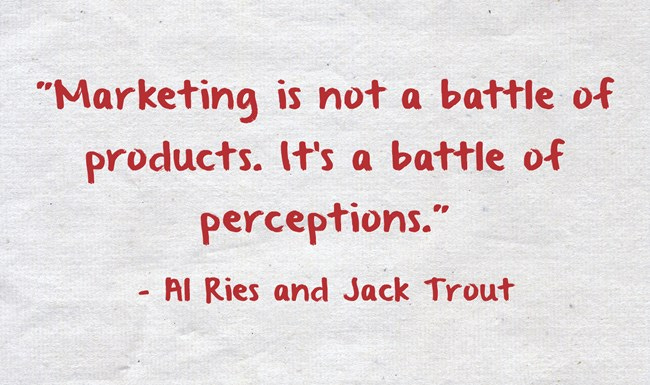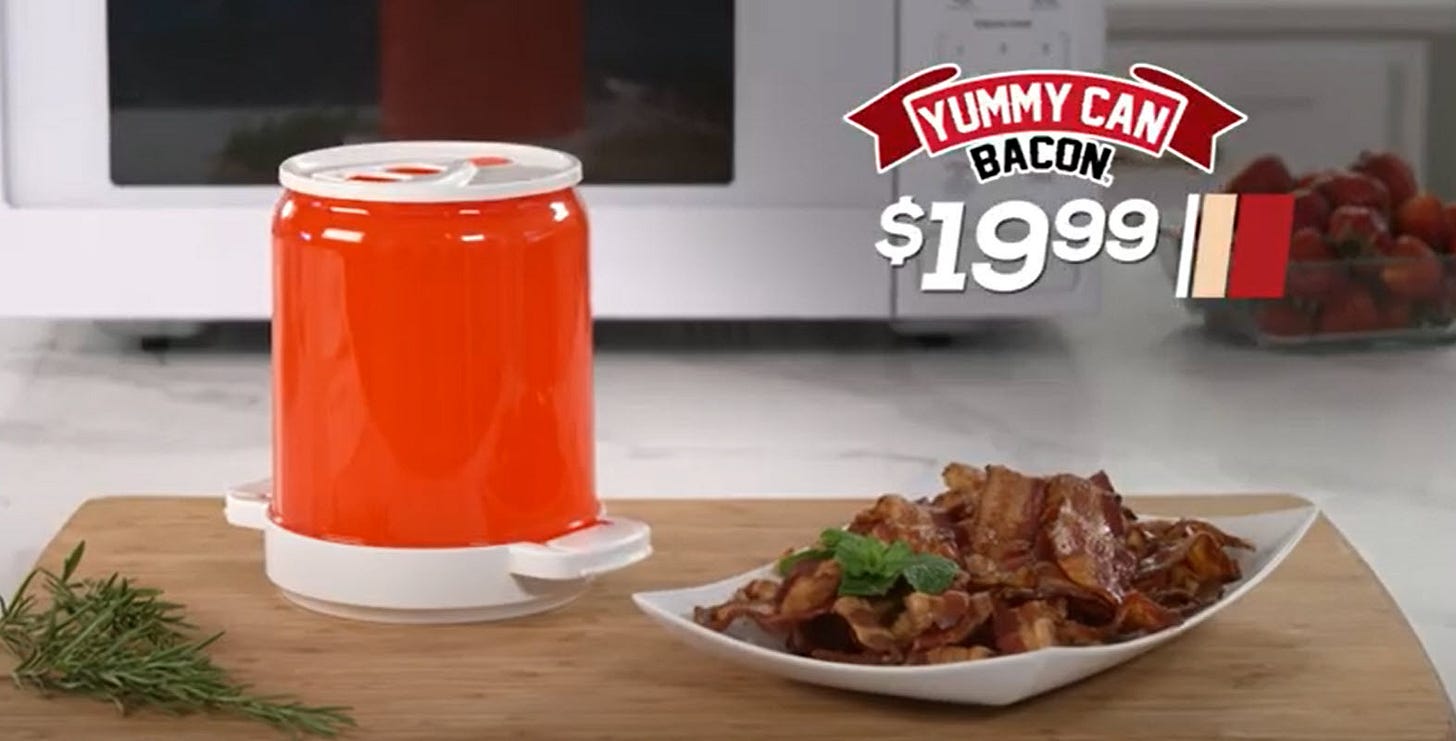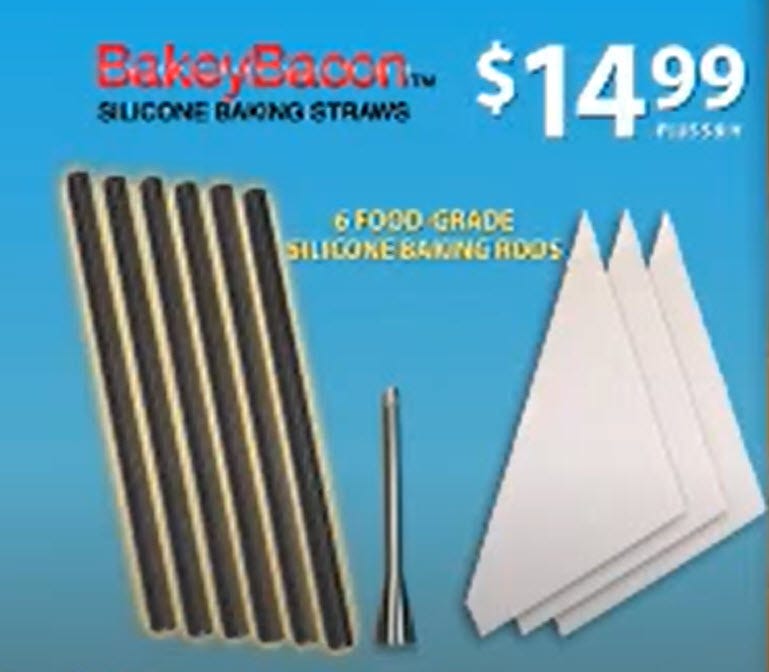Adding Value Without Changing Your Product 'in the Slightest'
Rory Sutherland & the power of perceived value
I’m starting this week’s newsletter with a ‘shout-back’ (or whatever you call a shout-out in return to someone giving you a shot-out). Shout-back to Brett Curry of OMG Commerce. In the latest episode of his excellent podcast eCommerce Evolution, Brett gives his “best of podcast” tips, and one of my tips had the honor of being #1 on his list. Thanks, Brett!
Below is the episode. (My name comes up around the 7:40 mark.)
DR Dynamite!💥
Moving right along, this is the part of the newsletter where I share wisdom from the ‘Masters of Marketing’ paired with tried-and-true (T&T) techniques from the world of direct-response advertising. Today’s Master: Rory Sutherland.
Sutherland is vice chairman of the British ad agency Ogilvy & Mather (yes, that Ogilvy). He typically shares his advertising advice in his “Wiki Man” column for The Spectator and his books (e.g. 2019’s Alchemy: The Dark Art and Curious Science of Creating Magic in Brands, Business, and Life). However, today we’ll be examining comments from his hilarious 2009 TEDTalk (below).
If you listen past the jokes, Sutherland’s thesis is clear: “All value is perceived value.” In his characteristically comedic way, he attacks the common belief that the value of a product comes from tangible things like its engineering. With example after example, he proves that clever people can create “intangible added value without changing the product in the slightest.” I like that! It’s a very “DR” way of thinking. 😂
It was a political strategist (Lee Atwater) who said that “perception is reality.” Sutherland’s point is that this is true in marketing as well as politics. Ries and Trout famously put it this way:
Indeed, it could be argued that winning that battle is the entire purpose of marketing — and direct marketers have developed several effective tactics over the years. Below is one of my favorite examples from the ‘Golden Age’ of DRTV. (Sorry about the audio.)
OK, so disparagement is no longer considered a kosher advertising technique — and today this tactic will seem quaint. After all, every retailer now has a generic copy next to each major brand on its shelves. They invite you to compare ingredients and even use the same forms and colors — to the point where it’s easy to grab their version thinking you grabbed the brand leader.

The point here is that my industry has always had a deep understanding of Sutherland’s thesis. We’ve engineered more “perceived value” than anyone else! In fact, obsessively focusing on this tactic is one of the ways we continue to win in the marketplace — often against larger brands with bigger advertising budgets.
Let’s take another example. At one time, every ‘As Seen on TV’ commercial on the air featured a sequence that looked something like this:
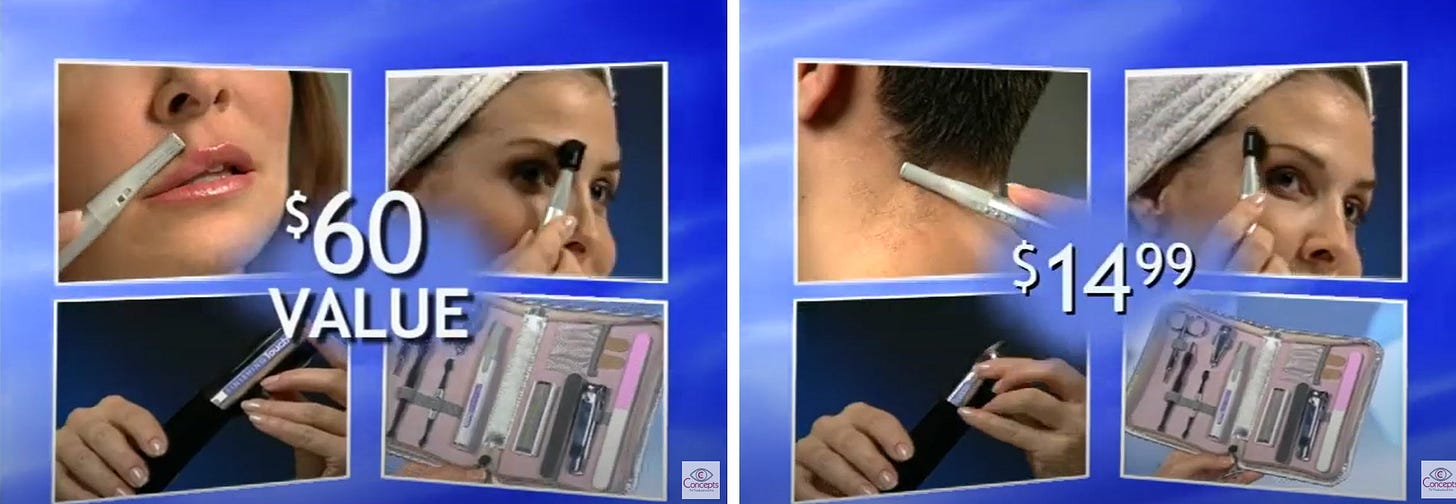
The line that accompanied this: “An incredible $60 value for just $14.99!” It wasn’t just a line. As you can see from the images in the quad, we worked hard to back it up —usually by adding accessories (e.g. the carrying case and comb attachment) and premiums (e.g. the deluxe mani-pedi kit) to our offers.
Here again, though, perception is more important than the reality (i.e. real value) of what we give away. I have been continually amazed at how even the littlest thing can improve the value perception of an offer. In our Ultimate Irish Peeler commercial, the premium is a cheap piece of plastic that does a cool trick. People love it!
Here’s another tactic I learned years ago that perhaps illustrates Sutherland’s thesis even better. Let’s call it the “diamond-plate trick.” Take a look at this offer and consider how the background affects your perception of the value of the product (which is really just a tiny drill bit when you think about it).
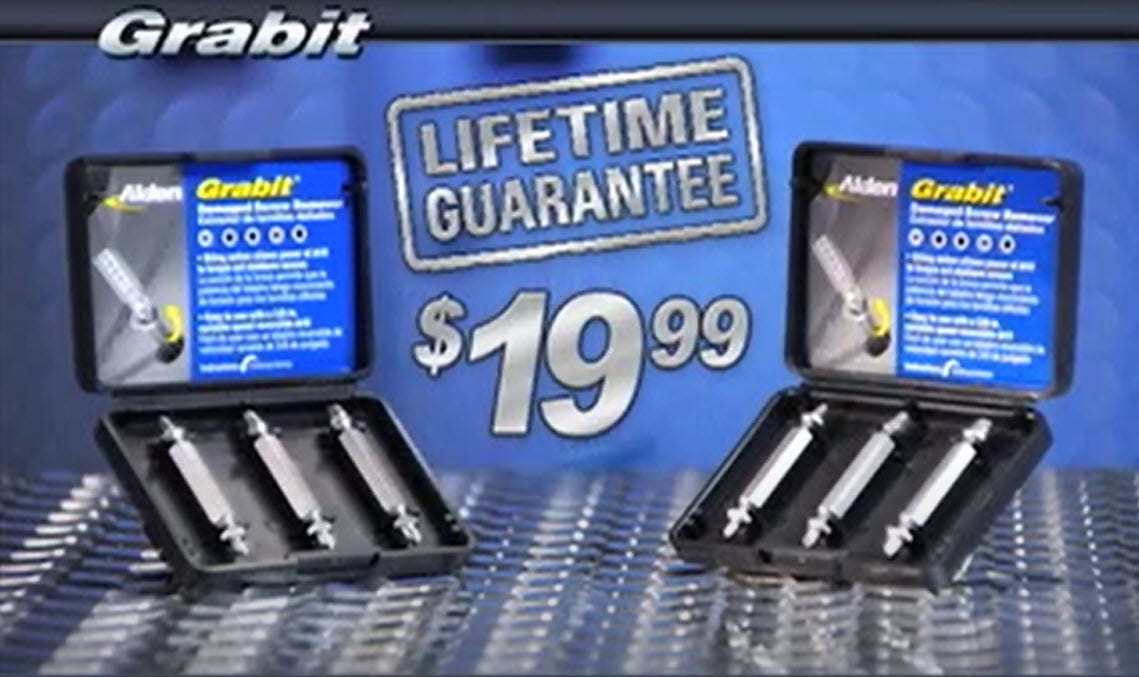
That’s right: A high-value background adds perceived value to a product for no logical, tangible reason. You better bet our seasoned creative team always pays careful attention to backgrounds. Below is another variation from a more recent commercial, our Yummy Can Bacon spot.
In this scene, it’s the marble counter doing the work. The microwave in the background also helps, and there’s a food-styling trick happening as well … but that’s a topic for another day.
Not to put too fine a point on it: Now take a look at a lazy offer (cut-out product on a cheap-looking, virtual background) and consider how that impacts your value perception.
You may have noticed that all of these offers were under $20. A common question I get asked is: Does DRTV only work for lower price points? My answer involves another aspect of perceived value: It depends on the “price to value” ratio.
It’s true that DRTV buyers are impulse buyers, and that usually requires a low price they won’t think too much about spending. Traditionally, that has been less than $20. However, if your perceived value is higher, your price point can be higher, too. A $19.99 offer could easily become a $99.99 offer if, say, you were offering a 55-inch TV for that price. Indeed, the response would probably crash your website!
Chart Watch👁️
An odd 30 with a DR end tag has pushed its way onto the DRMetrix, landing at #29 this week.
The CrunchCup
Pitch: “No spoon. No bowl. It’s cereal on the go.”
Offer: $19.95 for one, 2nd one for 35% off
Marketer: Crunch Tech
Speaking of advertising techniques that are no longer kosher, I’m pretty sure you can’t say “if you order in the next 30 minutes you get [X]” unless you actually run the clock. The tactic used to be ubiquitous in DR, but I haven’t seen it from the major players for years. There’s probably a good reason for that.
That said, I want to praise this team for creating a viable hybrid of advertising techniques. I’m not a fan of ads that primarily seek to amuse. As the great Claude Hopkins put it: “People don’t buy from clowns” (especially clowns holding exploding milk bottles). But if you’re going to follow the lead of the big-brand advertisers and make silly spots, you should at least close with a solid offer like this one.
As for the product, I wouldn’t have given it the green light. Then again, IdeaVillage did have a good run with Snackeez. What’s odd is that this marketer appears to be targeting adult men (stoners?) for some reason instead of moms with toddlers, the primary prospect.
Only Premium Subscribers past this point.
Sorry, but if you’re a free subscriber, you’re about to hit a paywall. The good news? Getting past that paywall is inexpensive — and so worth it!



